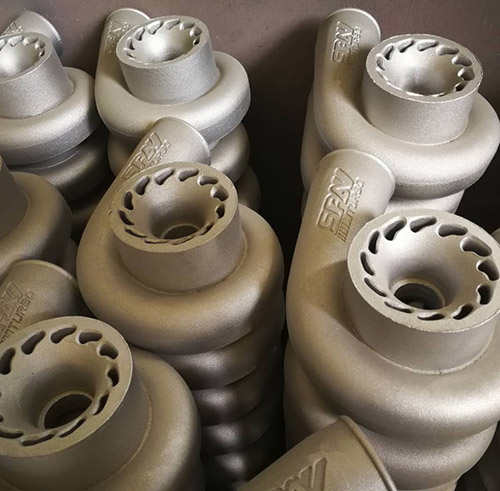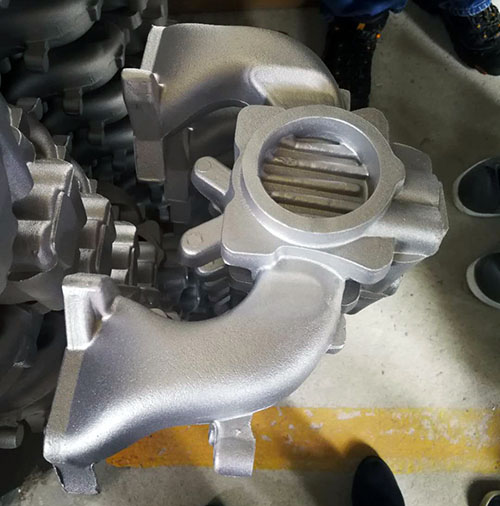News summary:
Explosion-proof cameras, many people will feel that there are such strange cameras, can be a camera that can protect the surrounding environment from explosion, but the explosion-proof camera in the true sense is to prevent the explosion of the internal camera caused by the explosion of the external environment, some people will ask, since all Explosion, there is a difference, why do we have to send explosion-proof cameras?
The principle of application of explosion-proof equipment is generally gap-type, contact-proof type, the use of safety measures and other features such as the use of explosion hysteresis characteristics to support the other advanced explosion-proof power principle. Among them, there are gap-proof explosion-proof principles for television systems and explosion-proof principles using safety measures.
First, the explosion-proof camera explosion-proof principle of the division
1. Explosion-proof camera gap explosion-proof principle EDM and arc can ignite explosive mixtures. The gap-proof flameproof structure established by Germany is a more reliable method of preventing arcs and other ignition of surrounding explosive mixtures. Shenzhen Shiguo's explosion-proof camera shroud adopted this method and played an explosion-proof role. It has a sufficiently strong enclosure that withstands the maximum explosion pressure generated by the internal explosive gas mixture, ensures no deformation or damage, and has a certain structural gap to allow the injected combustion products to cool down below the outside through a certain flange length The autoignition temperature of the explosive mixture. The structure gap may be composed of a plane joint surface or a cylinder joint surface, and may also be a structure composed of a curved road, a thread, or a barrier type. In addition, structures such as microholes, mesh covers, laminations, sand-filling, etc. also fall into the explosion-proof form of this principle.
2. Explosion-proof camera uses the explosion-proof principle of safety measures. A series of safety measures are adopted on the equipment so that it will not produce sparks, arcs or dangerous temperatures to the maximum extent, or the effective sparks, arcs or temperature cannot be generated by the protection elements. The ignition of explosive mixtures to achieve the purpose of explosion protection, explosion-proof increased security, intrinsically safe and other electrical equipment are manufactured using this principle.
Second, the material of explosion-proof equipment
For explosion-proof explosion-proof equipment enclosure should be able to withstand 1.5 times the actual maximum internal explosion pressure, but not less than 3.5 × 105Pa. Equipment used for Class I mining face shall be made of steel plate or Cast Steel ; Class I equipment for non-excavating face shall be available in grades not less than HT25-47 grey Cast Iron ; Class I portable equipment and Type II equipment can be made of a light alloy with a tensile strength of not less than 117.6N/mm2 (12kg/mm2) and a magnesium content of not more than 0.5% (by weight). The shell material of the essential equipment can be made of a light alloy with a magnesium content of not more than 0.5% by weight or a plastic with a surface resistance of not more than 1 x 109.
Third, the sign of explosion-proof equipment
Explosion-proof equipment must be printed with the product's explosion-proof signs. Clear and permanent markings “Ex†should be provided on the obvious parts of the equipment housing. Nameplates should also be set and reliably fixed. There should also be explosion-proof type signs on the equipment. Common explosion-proof types include explosion-proof type “dâ€, intrinsically safe “ia†and “ibâ€, increased safety type “eâ€, positive pressure type “pâ€, and oil-filled type. “oâ€, sand-filled “qâ€, non-spark type “nâ€, encapsulated “mâ€, hermetically sealed “hâ€, special type “sâ€, dust-proof “DIPâ€, etc. Category and gas class (Type I is the denser methane environment in the mine, Type IIA is an explosive gas mixture environment such as ethane, propane, carbon monoxide, methanol, and gasoline, IIB is an explosive gas mixture environment such as gas and ethylene, and IIC is hydrogen, Acetylene and other explosive gas mixture environment), temperature group (generally T1, T2, T3, T4, T5, T6 and other six groups, the temperature from high to low, indicating that the device's maximum surface temperature does not allow more than the value), etc. Explosion-proof certificate number; production date, product number, product standard must indicate the content must be noted. For example, the explosion-proof mark on a world explosion-proof camera is “ExdIICT6â€. It means that the explosion-proof camera is explosion-proof and can be used in an environment containing explosive gas mixture of hydrogen and acetylene. The maximum surface temperature of the equipment cannot exceed 80°C.
At present, the market competition of explosion-proof cameras is very fierce, although we can determine whether or not an explosion-proof camera meets its requirements through explosion-proof grades and national certification levels. However, many manufacturers often use brand-name curtains, shoddy, and hold prices. To mislead customers and make many engineering companies deceived. Therefore, here, Xiao Bian reminds customers who are interested in purchasing explosion-proof cameras to polish their eyes, verify the product's grade certificate, review more reviews on the product, and see which product level they prefer. Generally speaking, it is definitely a grade. The higher the explosion-proof performance, the higher the price.
Explosion-proof cameras, many people will feel that there are such strange cameras, can be a camera that can protect the surrounding environment from explosion, but the explosion-proof camera in the true sense is to prevent the explosion of the internal camera caused by the explosion of the external environment, some people will ask, since all Explosion, there is a difference, why do we have to send explosion-proof cameras?
The principle of application of explosion-proof equipment is generally gap-type, contact-proof type, the use of safety measures and other features such as the use of explosion hysteresis characteristics to support the other advanced explosion-proof power principle. Among them, there are gap-proof explosion-proof principles for television systems and explosion-proof principles using safety measures.
First, the explosion-proof camera explosion-proof principle of the division
1. Explosion-proof camera gap explosion-proof principle EDM and arc can ignite explosive mixtures. The gap-proof flameproof structure established by Germany is a more reliable method of preventing arcs and other ignition of surrounding explosive mixtures. Shenzhen Shiguo's explosion-proof camera shroud adopted this method and played an explosion-proof role. It has a sufficiently strong enclosure that withstands the maximum explosion pressure generated by the internal explosive gas mixture, ensures no deformation or damage, and has a certain structural gap to allow the injected combustion products to cool down below the outside through a certain flange length The autoignition temperature of the explosive mixture. The structure gap may be composed of a plane joint surface or a cylinder joint surface, and may also be a structure composed of a curved road, a thread, or a barrier type. In addition, structures such as microholes, mesh covers, laminations, sand-filling, etc. also fall into the explosion-proof form of this principle.
2. Explosion-proof camera uses the explosion-proof principle of safety measures. A series of safety measures are adopted on the equipment so that it will not produce sparks, arcs or dangerous temperatures to the maximum extent, or the effective sparks, arcs or temperature cannot be generated by the protection elements. The ignition of explosive mixtures to achieve the purpose of explosion protection, explosion-proof increased security, intrinsically safe and other electrical equipment are manufactured using this principle.
Second, the material of explosion-proof equipment
For explosion-proof explosion-proof equipment enclosure should be able to withstand 1.5 times the actual maximum internal explosion pressure, but not less than 3.5 × 105Pa. Equipment used for Class I mining face shall be made of steel plate or Cast Steel ; Class I equipment for non-excavating face shall be available in grades not less than HT25-47 grey Cast Iron ; Class I portable equipment and Type II equipment can be made of a light alloy with a tensile strength of not less than 117.6N/mm2 (12kg/mm2) and a magnesium content of not more than 0.5% (by weight). The shell material of the essential equipment can be made of a light alloy with a magnesium content of not more than 0.5% by weight or a plastic with a surface resistance of not more than 1 x 109.
Third, the sign of explosion-proof equipment
Explosion-proof equipment must be printed with the product's explosion-proof signs. Clear and permanent markings “Ex†should be provided on the obvious parts of the equipment housing. Nameplates should also be set and reliably fixed. There should also be explosion-proof type signs on the equipment. Common explosion-proof types include explosion-proof type “dâ€, intrinsically safe “ia†and “ibâ€, increased safety type “eâ€, positive pressure type “pâ€, and oil-filled type. “oâ€, sand-filled “qâ€, non-spark type “nâ€, encapsulated “mâ€, hermetically sealed “hâ€, special type “sâ€, dust-proof “DIPâ€, etc. Category and gas class (Type I is the denser methane environment in the mine, Type IIA is an explosive gas mixture environment such as ethane, propane, carbon monoxide, methanol, and gasoline, IIB is an explosive gas mixture environment such as gas and ethylene, and IIC is hydrogen, Acetylene and other explosive gas mixture environment), temperature group (generally T1, T2, T3, T4, T5, T6 and other six groups, the temperature from high to low, indicating that the device's maximum surface temperature does not allow more than the value), etc. Explosion-proof certificate number; production date, product number, product standard must indicate the content must be noted. For example, the explosion-proof mark on a world explosion-proof camera is “ExdIICT6â€. It means that the explosion-proof camera is explosion-proof and can be used in an environment containing explosive gas mixture of hydrogen and acetylene. The maximum surface temperature of the equipment cannot exceed 80°C.
At present, the market competition of explosion-proof cameras is very fierce, although we can determine whether or not an explosion-proof camera meets its requirements through explosion-proof grades and national certification levels. However, many manufacturers often use brand-name curtains, shoddy, and hold prices. To mislead customers and make many engineering companies deceived. Therefore, here, Xiao Bian reminds customers who are interested in purchasing explosion-proof cameras to polish their eyes, verify the product's grade certificate, review more reviews on the product, and see which product level they prefer. Generally speaking, it is definitely a grade. The higher the explosion-proof performance, the higher the price.
Aluminium Castings, processing ways mainly include Sand Castings, Low Pressure Castings, and die castings / High Pressure Castings.
Examples of items mainly are aluminium housing, pump gear box, pump housing, valve body, marine parts, Auto Parts , and turbocharger compressor wheel, bearing housing and compressor housing etc..
Die casting is the most important processing way for aluminium castings.
Advantages of die casting:
- Excellent dimensional accuracy (depend on casting material, but typically 0.1 mm for the first 2.5 cm and 0.02 mm for each additional centimeter.
- Smooth cast surfaces.
- Thinner walls can be cast as compared to sand and permanent mold casting.
- Inserts can be cast-in.
- Reduces or eliminates secondary machining operations.
- Rapid production rates.
- Casting tensile strength as high as 415 megapascals (60 ksi).
- Casting of low fluidity metals.
-

-

Aluminium Castings
Aluminium Castings,Aluminium Die Casting,Cast Aluminium,Aluminium Casting Part
Dandong Hengrui Machinery Co., Ltd. , http://www.hrcastings.com
![<?echo $_SERVER['SERVER_NAME'];?>](/template/twentyseventeen/skin/images/header.jpg)